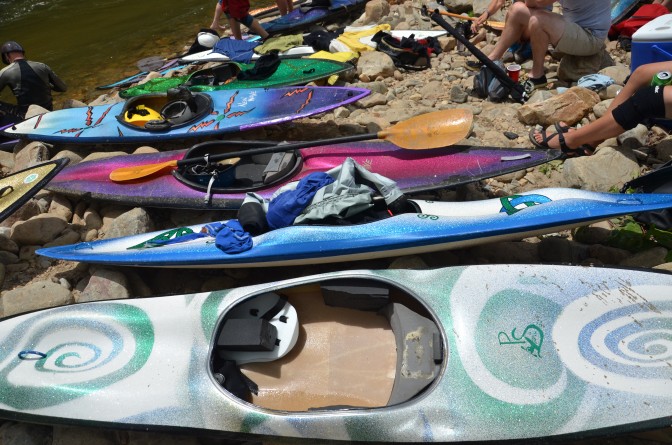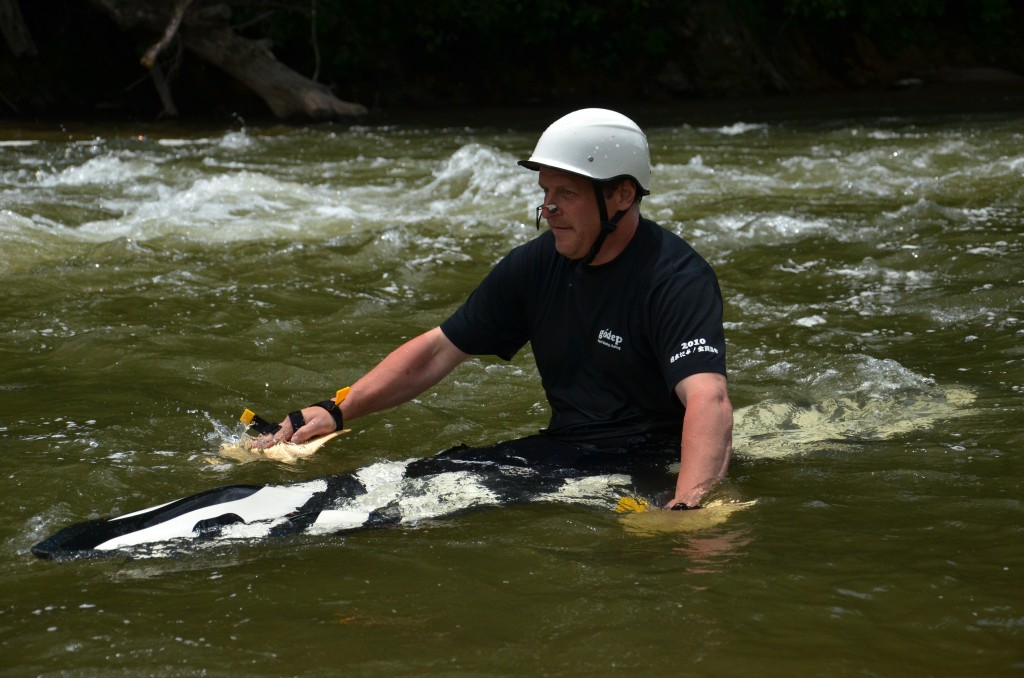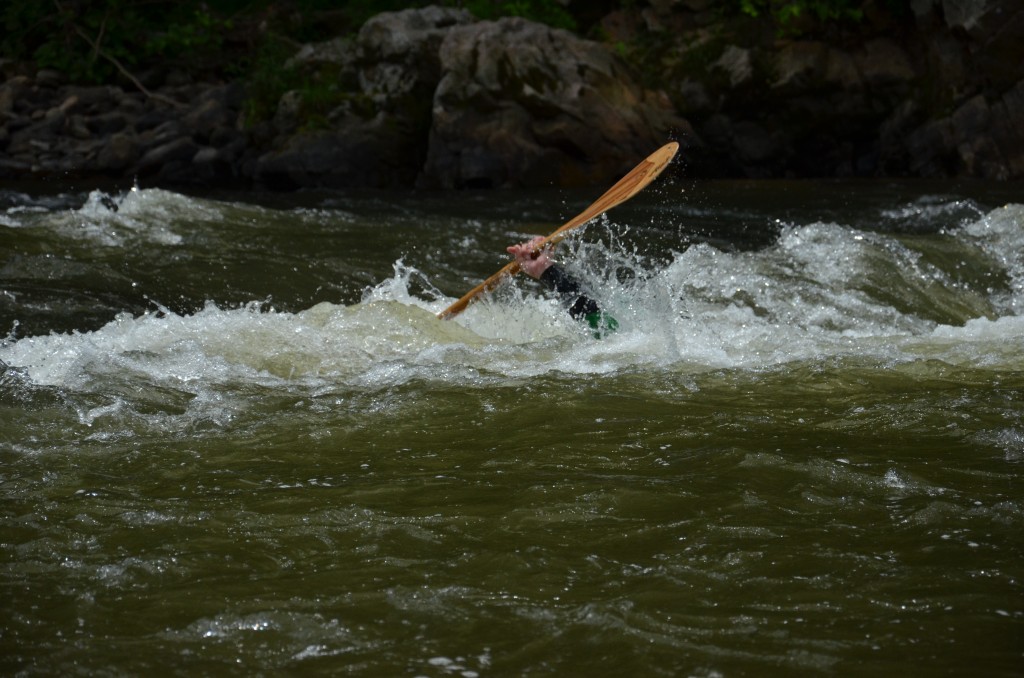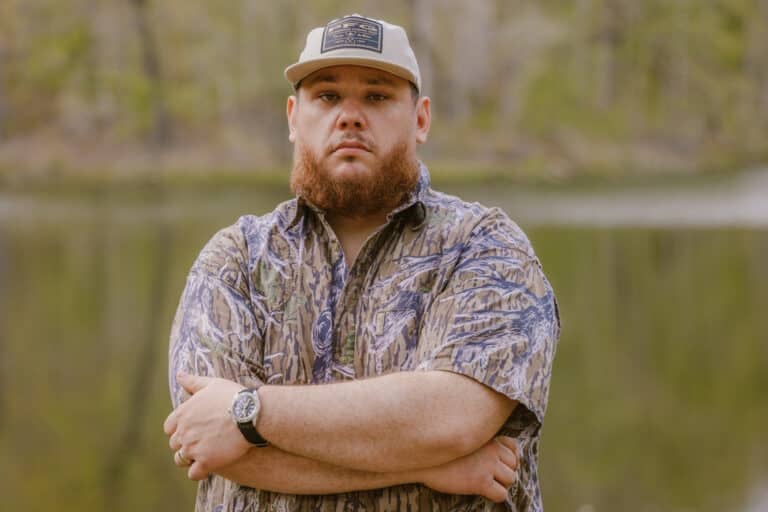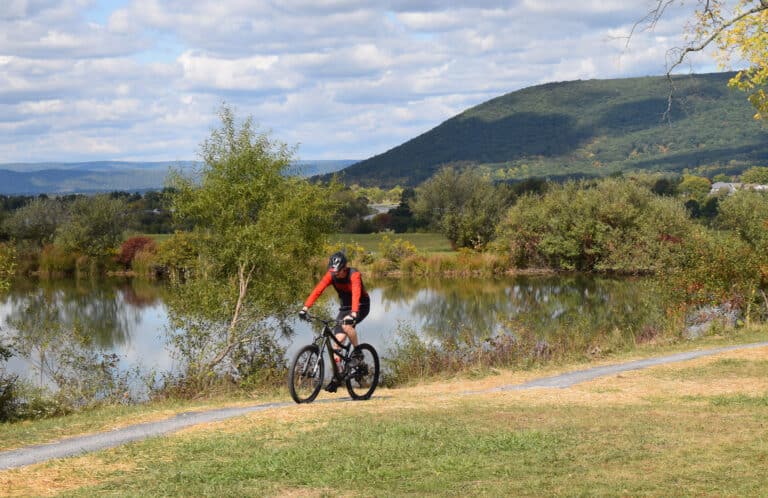On a rocky, mid-river island on Tennessee’s Nolichucky River, thirty-three squirt boaters gathered on May 31 to compete in the annual World Mystery Championship, where each paddler performed underwater moves beneath Cowbell rapid for nearly a half-minute.
It is an inadvertently clandestine sport that drives each participant to descend deeper and remain longer underwater in a long thin boat. Methods of sinking are difficult to teach because the interaction varies between current and boater. The only thing spectators can see is the focused final inhalation of the boater before the paddler sinks, and then the helmet of the boater as it emerges from the murkiness around 20 feet downstream. All the action is unseen personalized mystique.
“Commentators would have trouble describing what people are doing,” said squirt boat designer Jim Snyder. “You have to do it your own way.”
Perhaps because it is so strangely individualistic, it has received little mention worldwide, no sponsorships, and little growth in popularity, despite its birth and development in the early 1980s. The three largest hubs of squirt boaters are in East Tennessee, Oregon and Japan.
Bryce Evans, 37, of Chattanooga, Tenn. captured the size of the sport saying, “When you win the world championship, you’re the best in the world out of the 30 people in the world who know what it is.”
Some suggest that the sport is concentrated in small circles of enthusiasts because people are scared to release themselves to an unpredictable current. Another cause that makes the sport difficult to get into is that very few people do it, making it nearly impossible for many to try it out in a friend’s boat. Interested boaters cannot rent squirt boats, and the steep cost of the boats (around $1,600) is also a deterrent.
Andrew Grizzell, 34, of Columbia, South Carolina, won his first world championship this year with a final heat time of 28.05 seconds. He was followed closely by twenty-eight-year-old, three-time world champion Taft Sibly of Chattanooga, Tenn., with a time of 21 seconds and John Bell at 20.7 seconds.
The longest recorded squirt boater’s time in a competition was 47 seconds, but Snyder said he sat 12 feet away from a guy who was under for 59. Sub-surface time is dependent upon the rapid, experience level, the “charging arc” (angle of entry), the appropriateness of the boat and the performance of the boater.
The boats are molded uniquely to each boater’s body. The shape of the bottom mimics the shape of an airplane wing, and they catch currents in exactly the same way. Participants wear helmets and use hand paddles or paddles similar to those used by kayakers. No personal flotation device is worn because it inhibits the ability to sink.
Snyder, now 61, of West Virginia, has designed nearly every modern squirt boat since he modified the existing model in 1983. He said that if a particular design was a quarter-inch too thick, it would be a big deal, so he takes great care measuring and modifying a design to be perfectly in tune with its operator.
Mystery squirt boaters refer to themselves as zombies because after a day of mystery maneuvers and holding their breath for up to 40 seconds, their legs and feet are numb, eyes are glazed and bodies are in an exhausted trance. It’s no wonder such a daring sport has remained so obscure.
“You got to have the appetite for this,” said Snyder. “We are the undead, the underworld bosses.”
